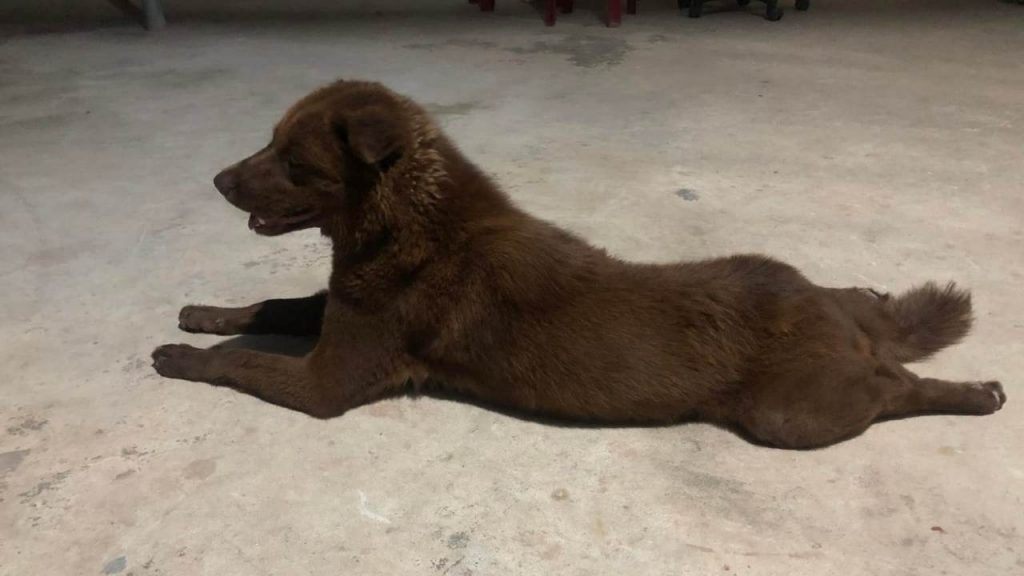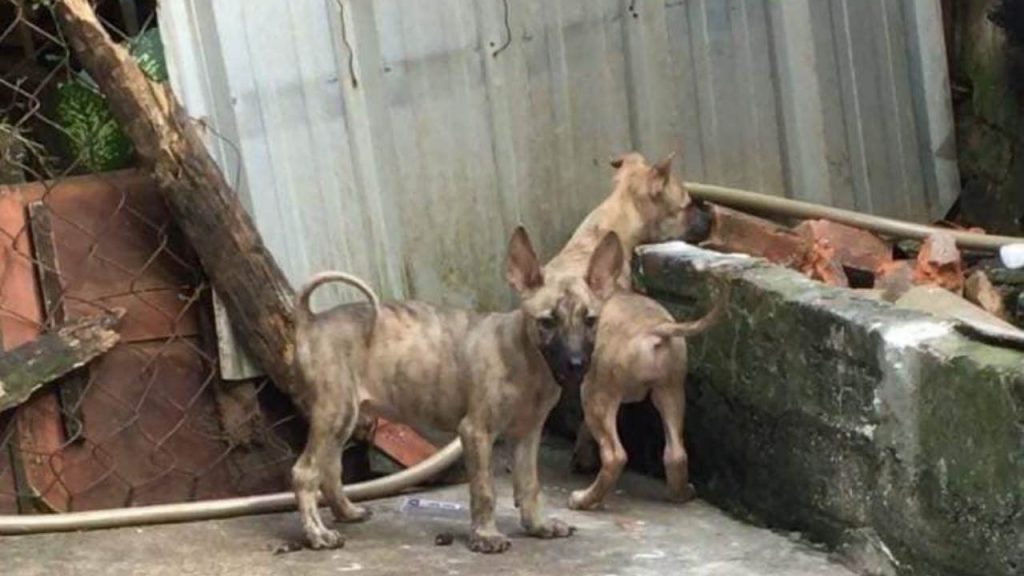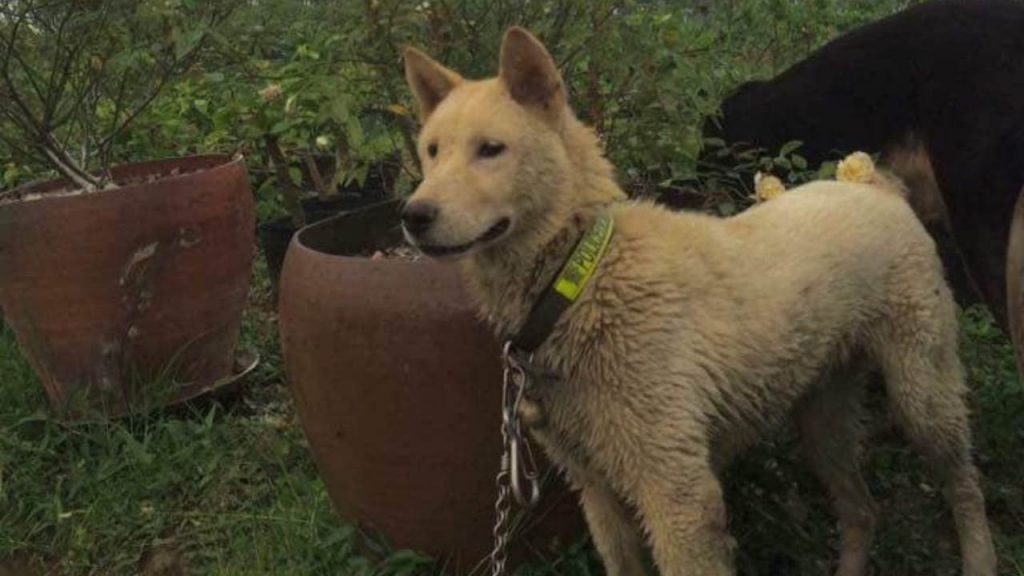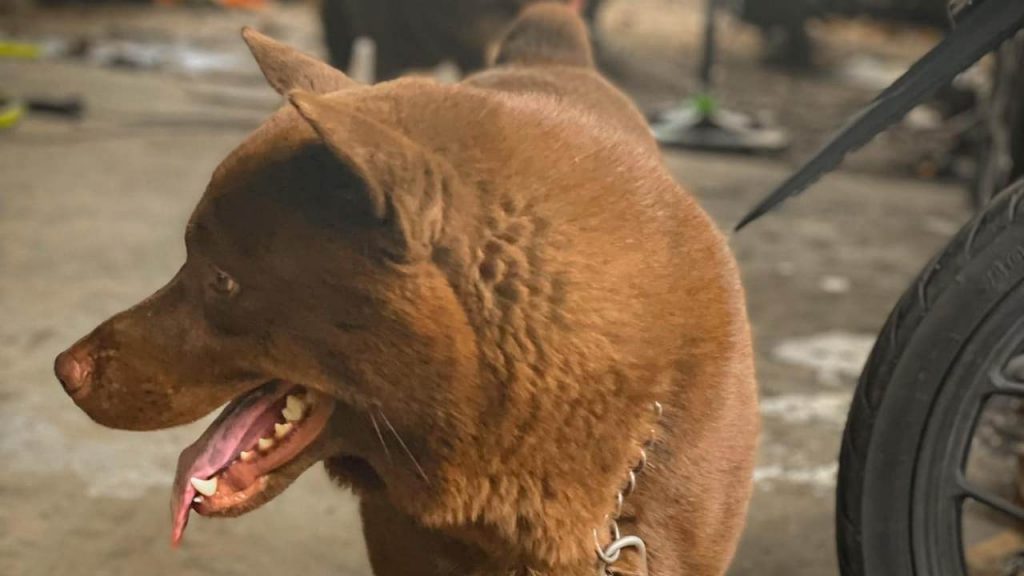One of the signature dog breeds from Asia is the Hmong Dog. This dog is also called a Saarloos Wolfdog, and it is a cross between a German Shepherd and a Siberian Husky.
The Hmong people are an ethnic group who inhabit the mountainous regions of China, Laos, Vietnam, and Thailand.
In recent years, this breed has been gaining popularity in the United States because of its unique appearance and temperament.
Page Content
What breed is a Hmong dog?
The Hmong Dog is a cross between a German Shepherd and a Siberian Husky. However, there are many different variations of this breed, so it is hard to say that there is one specific type of Hmong Dog.
What does a Hmong dog look like?

Hmong Dogs can vary greatly in appearance, depending on which parent breed they take after. However, most Hmong Dogs are medium to large in size that typically weighs between 50 and 70 pounds.
Talking about their appearance, they have a thick coat of fur that can be either long or short. They also typically have a docked tail and upright ears.
There are only a few dog breeds that have docked tails, such as the Rottweiler and the Doberman Pinscher. The Hmong Dog’s tail is usually docked for two reasons: to make it easier to work with in the field and to prevent injuries.
Hmong Dog as Pets in The United State
Hmong dog has a great personality, they are very friendly, intelligent, and loving. With proper training and socialization, they can get along with kids and other pets in the family. They need a lot of exercise, so an active family who loves to go on hikes or runs would be ideal.
As they are native to Vietnam, people there in Vietnam usually keep them as small guard dogs in their house, or some other dogs can work on the farms to look after buffalos and other homestead animals. However, in recent years, more and more Hmong Dogs are being adopted as pets in the United States.
One of the good things about this dog breed is that they are small or medium size dogs. So, if you keep them in your family and there are children or seniors in your house, they will perfectly fit and will not harm them in any way.
They are also considered low-maintenance dogs as they do not require much grooming. However, you still need to brush their coat once or twice a week to remove any tangles or mats.
In short conclusion, Hmong dogs make good family pets that are loving and affectionate. They are also low-maintenance dogs that don’t require much grooming. However, you will need to have more activity for them to keep them busy due to their personality, so an active family would be ideal.
Be Aware of the States
I don’t want you to waste time reading the full care guide and health tips, but when you purchase the animal, you realize that the Hmong dog is not allowed to keep as a house pet in your State. So, before learning about caring, read the allowance first!
As the Hmong dog originated in Vietnam, there might be some import regulations that you need to take into consideration when thinking about adopting one.
The United States Department of Agriculture (USDA) regulates the import of animals into the country, and each state has their own laws regarding which animals are allowed to cross state borders.
Some states, such as California, have very strict laws regarding the import of certain dog breeds, so you will need to check with your local animal shelter or rescue organization to see if a Hmong Dog is allowed in your state.
The best way to find a Hmong Dog in the United States is to contact a rescue organization that specializes in this breed. There are a few different rescues that focus on Hmong Dogs, so you should be able to find one in your area.
If you are interested in adopting a Hmong Dog or any other dog breed, please visit your local animal shelter or rescue organization to see if they have any availability. Adopting a dog is a rewarding experience, and it provides a loving home for a dog in need.
Another reason why states matter is that Hmong dog is tropical climate dog, so they don’t do well in colder climates. If you live in a state with cold winters, it’s important to make sure that your dog will have a warm place to stay inside during the winter months.
Some of the states that have good weather conditions for Hmong dogs are California, Nevada, Arizona, and New Mexico. So, if you live in one of those states, then you’re in luck!
But if you live in a state with cold winters, like Montana, North Dakota, or Minnesota, you’ll need to take extra care to ensure your dog is comfortable during the winter months.
Those are all my notes for you before you decide to purchase and keep a bubbly Hmong dog in your house. Now, I will share with you some care tips and also health concerns of Hmong dogs, so then you can visualize how challenging it is to take care of a Hmong dog.
Care Guide for Hmong Dogs & Health Concerns
Quick conclusion about Hmong dog caring level. Hmong dog is a low-maintenance dog breed. So, it will not take a lot of time and experience to care for even a baby. They require a very regular diet like other house dogs and will do well with some treats you give them, but that is not mandatory.
However, you will need more activity to keep them busy because they are wild-nature dogs, and all of these kinds of dog breeds need more excesses than others. So, if you think you can provide what they need, then go ahead and adopt one!
What Does a Hmong Dog Eat?

Hmong dogs are omnivores, meaning they can eat plant and animal-based food. However, it is important to feed them a balanced nutritious.
As I mentioned above, they do well with all the “treat” you give them so feeding them is not a challenge. The thing to keep in mind is that they eat what you give them does not mean that whatever you give them is good to eat as daily food.
The best way to ensure that your Hmong dog is getting the nutrients they need is to feed them commercially prepared dog food that is designed for their specific needs.
There are a few different brands of dog food that make foods specifically for this medium size dogs, so you should be able to find one that your dog enjoys.
If you ask me what food I prefer to feed my Hmong dog, I will go with Hill’s Science Diet. The reason is that this food provides enough energy for a dog without any other supplements. Another reason is that Hill’s Science Diet is produced for hairy dogs. It has beneficial vitamins to keep their furs smooth and solve the skin problem in hairy dogs. Many owners noticed that their pets no longer scratch themself all day and the dogs no longer fart.
How Much Exercise Does a Hmong Dog Need?
Hmong dogs are high-energy dogs, so they require a lot of exercise. It is important to make sure that they get at least an hour of exercise each day.
The best way to provide this exercise is by taking them on long walks or runs. You can also take them to the dog park to play with other dogs.

If you live in an apartment or do not have access to a lot of outdoor space, you can provide exercise for your Hmong dog by playing fetch inside your home.
Hmong dogs are also very intelligent, so it is important to give them mental stimulation as well. You can do this by teaching them tricks or playing games with them.
Some of the best games to play with your Hmong dog include hide and seek, tug of war, and fetch.
One tip from my side is that do not play with your dog after 6 pm. I live in a small apartment so that any spaces are shared between me, my wife, and my daughter. After 7 pm is the time when my daughter goes to sleep. I need to keep my dog calm after 6 pm so that it won’t make any noises and scare my baby.
If you have children or seniors in your house, maybe the tip is perfect for you.
How Often Should You Bathe a Hmong Dog?
Hmong dogs do not need to be bathed very often. In fact, bathing them too often can strip their fur of natural oils and cause skin irritation.

It is generally recommended that you bathe your Hmong dog once or twice weekly. Some owners will bathe their dogs every two weeks due to low activity. However, if they get dirty or start to smell bad, you can bathe them more frequently.
I usually have a daily walk with my dog for about 1 hour together with my daughter. Haha, yes, I have the dog before my little girl, so they are both my child.
After three or four days, I noticed my dog started to smell bad, and that’s why I more regularly give him a bath compared to other owners.
When bathing your Hmong dog, make sure to use a dog-specific shampoo that is designed for their fur type. Using human shampoo on your dog can strip its fur of natural oils and cause skin irritation.
If your Hmong dog has sensitive skin, you may want to use a hypoallergenic or oatmeal-based shampoo. You should also avoid using shampoos that contain fragrances, dyes, or other harsh chemicals.
After shampooing your Hmong dog, make sure to rinse them off thoroughly. Leaving soap residue on their skin can cause irritation and dryness.
Once your Hmong dog is clean, you can use a dog-specific conditioner to help detangle its fur and make it softer. However, this step is not necessary, and you can skip it if you want.
After conditioning your Hmong dog, make sure to rinse them off thoroughly. Leaving conditioner in their fur can cause buildup and make their fur greasy.
Once your Hmong dog is clean, you can use a towel to dry them off. You can also allow them to air dry. If you use a towel, make sure to avoid rubbing their fur too harshly, as this can cause damage.
Once your Hmong dog is dry, you can brush its fur to help detangle it and remove any knots. It is best to use a dog-specific brush that is designed for their fur type.
If you are not sure what kind of brush to use, you can ask your vet or groomer for recommendations. For me, I use this Brush for Cats and Small Dogs because it is designed for long-haired animals.
Hmong dogs have a lot of furs, so it is important to brush them regularly. Brushing their fur will also help to distribute natural oils and keep their skin healthy.
I brush my dog’s fur every day, sometimes twice a day. I find that this helps to keep their fur clean and free of tangles. It also helps to reduce shedding. Brushing him is also a way help me reduce stress as I have been working from home since 2020 due to Covid-19.
How Often Should You Cut a Hmong Dog’s Nails?
Hmong dogs have long nails that can grow quite quickly. If their nails are not kept trimmed, they can start to curl under and cause pain.
It is generally recommended that you trim your Hmong dog’s nails every two to three weeks. However, some owners may need to trim them more frequently if their nails grow quickly.
Common Health Problems in Hmong Dogs
[This section is reviewed and Approved by Dr. Linda (Vet)]
Hmong dogs are generally healthy and have few health problems. However, there are a few health conditions that they are more prone to developing.
Some of the most common health problems in Hmong dogs include allergies, skin problems, and eye problems.
Allergies
Hmong dogs are prone to developing allergies to certain things, such as pollen, dust mites, and certain foods.
If your Hmong dog has allergies, you may notice them scratching its skin excessively or developing a rash. They may also have runny eyes or a stuffy nose. It is important to work with your vet to identify the trigger and have a proper treatment plan. Treatment may involve avoiding the trigger, using the medication, or both.
Skin Problems
Any hairy dogs are prone to developing skin problems, such as hot spots, rashes, and dry skin.
Hmong dogs are especially prone to developing a condition called pyoderma, which is a bacterial skin infection. Pyoderma can cause your Hmong dog’s skin to become red, inflamed, and covered in pus-filled bumps.
If your Hmong dog has a skin problem, it is important to take them to the vet so that it can be properly diagnosed and treated. Treatment may involve antibiotics, medicated shampoos, or other medications.
Eye Problems
Eye problems sometimes occur in Hmong dogs, such as cataracts and glaucoma.
Cataracts cause the lens of the eye to become cloudy and can eventually lead to blindness. Glaucoma is a condition that causes increased pressure in the eye, which can also lead to blindness.
Many owners notice that their animals will develop some eye problems when they arrive in a new place or home. If you notice any changes in your Hmong dog’s eyes, it is important to take them to the vet so that they can be properly diagnosed and treated. After a period of time, the problem will go away and rarely happens to their animals again.
So, to discuss about the common health problems that your Hmong dog might see, the Hmong dogs are healthy animals with few health problems. However, it is important to be aware of the conditions that they are more prone to developing so that you can watch for signs and get them treatment if necessary.
Final Vedic
My personal thinking, Hmong dogs make great pets. Some people may say the dog breed looks a bit boring, but for me, I love the animal’s personalities more than their appearance.
I have had 3 Hmong dogs as pets in my life, and each one of them has been different, but all great in their own ways. I think the pros definitely outweigh the cons when it comes to this dog breed.
I hope that after reading this article about the Hmong dog, you will be able to get a better understanding of the breed and what they are like. If you have any questions that were not answered in this article, feel free to ask in the comments section below!
